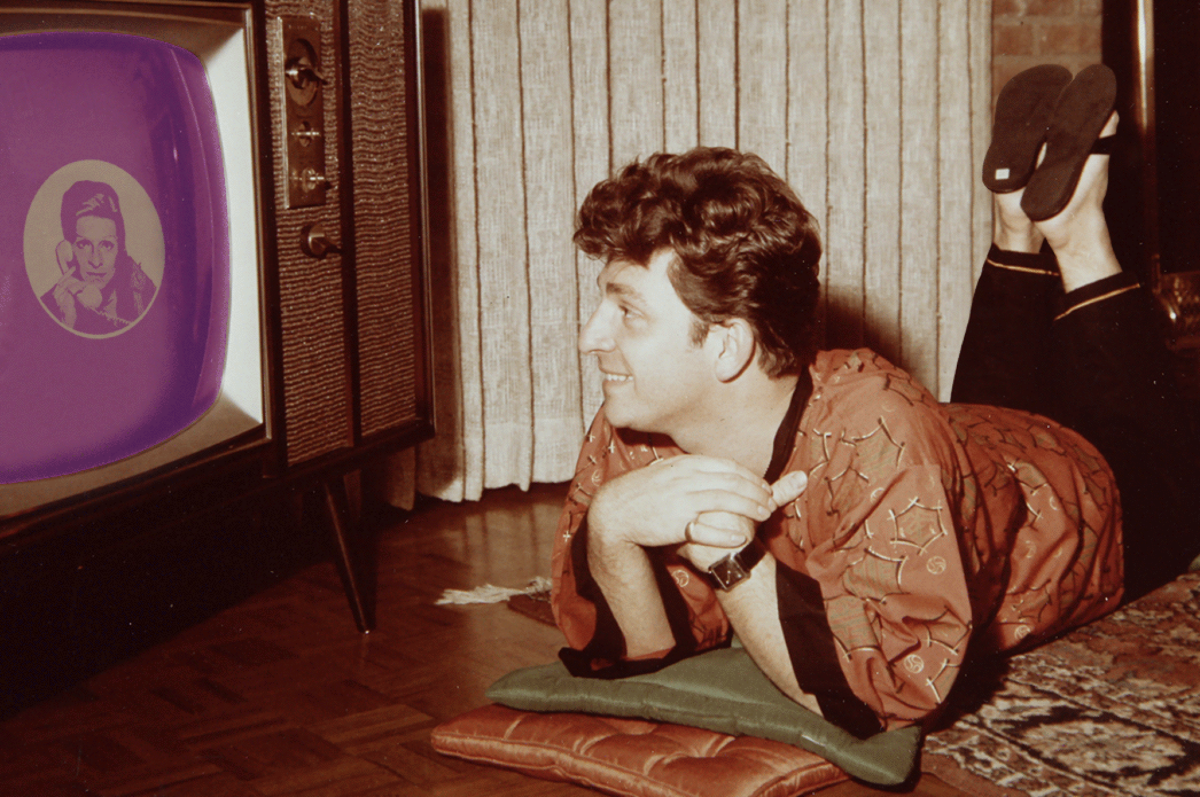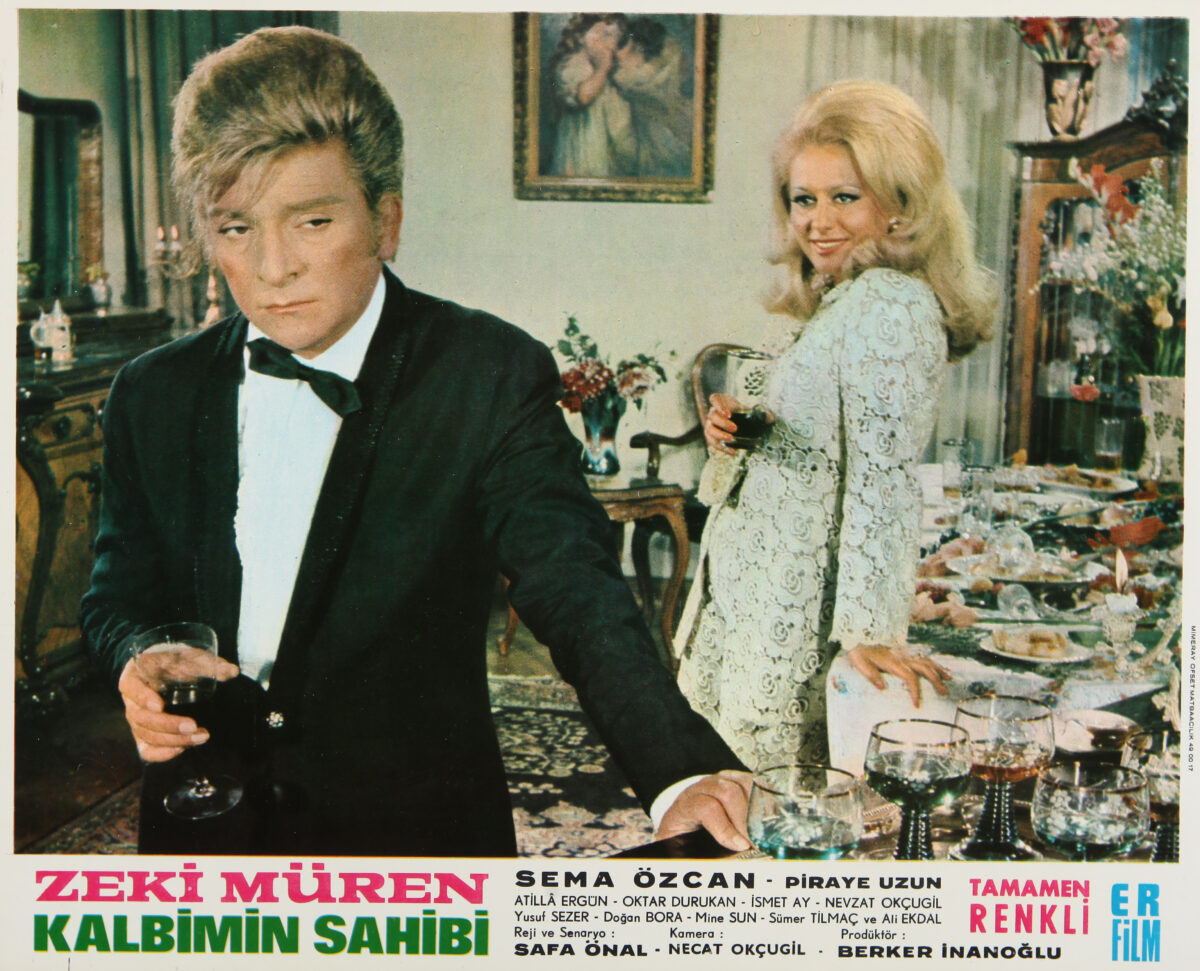An unconventional format for her documentary about an unconventional pop star
The Turkish songwriter, poet and performer Zeki Müren (1931-1996) was an idiosyncratic star, to say the least. A flamboyant fashion plate partial to platform boots, tight lamé outfits, impeccably frosted hair and sophisticated makeup, he cut a striking figure in a cultural landscape that could be conservative, and rallied the population around his personality and voice.
So it is fitting that Beyza Boyacioglu, MSc ’16, chose a no less idiosyncratic approach for her documentary project “Zeki Müren Hotline.” The web-based project, which Boyacioglu directed with Jeff Soyk, is about the intimate emotional connection many Turkish people have with Müren. The testimonies are presented in an interactive manner—the work was designed to be experienced on a phone—and the result is so compelling that “Zeki Müren Hotline” was declared a Webby Honoree in the very competitive Web Art category at the 25th Annual Webby Awards, which highlight excellence on the internet.
Refining her approach at MIT
MIT bears a big influence on how Boyacioglu’s piece went from thesis to interactive doc, and why the resulting “Zeki Müren Hotline” is not your traditional documentary.
After earning a BA in Visual Arts from Sabanci University in Turkey, Boyacioglu got an MFA in Computer Arts from the School of Visual Arts in New York, and developed an interest in nonfiction. She landed a fellowship at the nonprofit UnionDocs, in Brooklyn, then enrolled in Comparative Media Studies at MIT. After graduation she spent two more years at the school’s Open Documentary Lab, an incubator exploring, among other things, nonlinear nonfiction storytelling, where Soyk was a Fellow.
“I think this project wouldn’t have happened if I wasn’t a part of Open Documentary Lab and if they didn’t put me in touch with all these collaborators and festivals,” Boyacioglu said, laughing. “I always joke that I kind of used this MIT program as an artist residency for myself. It was really a great place.”
The training Boyacioglu acquired in her Master’s studies at MIT helped her refine her storytelling. “It’s where I learned how to do proper research, and I really improved my writing,” she said. “It was media studies-oriented, but at the same time I took a world-building class that was super-interesting to me,” she added, referring to a class taught by the writer Junot Díaz.
Another key building block was being able to explore new options in terms of format. “I knew that they were doing a lot of experimentation with interactive cinema, like immersive forms, database documentaries,” Boyacioglu said. “It doesn’t have to be fancy stuff like VR to be innovative—there’s a lot of low-tech tools you can use to innovate in storytelling.”
Hanging on the telephone
That approach was not always a given. “Initially, I thought I was just going to do a straightforward feature-length documentary,” Boyacioglu said of a research trip she took to her native Turkey in the summer of 2015. “I was basically going to different cities and meeting up with people who knew him or who are experts in his work, like journalists or academicians. Another idea was to follow the locations that he used to go to.”
But as people started sharing their thoughts and memories about Müren, Boyacioglu changed tack. She decided to gather more messages and to that end placed little cards featuring the singer holding a phone, the caption “Will Zeki Müren hear us?” and a number in Istanbul public places like cafés and bus stops; she also created a Facebook group asking for contributions. “I felt like maybe that was a more interesting way to go than just doing straightforward interviews,” she said.
Word got around and the project was mentioned in local papers. Boyacioglu estimates that she ended up with around 300 or 400 voicemails, each telling a story of a person’s relationship with Müren and his art. A small selection is included in the project’s final version, which went online in December 2021.
For Sarah Wolozin, the Lab’s director, Boyacioglu and Soyk “created this beautiful portrait of these messages and memories of Zeki Müren that brought out that participatory part of what he meant to people. So it was a beautiful project that emerged out of her experience at the Lab.”
When form echoes content
Being in such a nurturing environment was key for Boyacioglu, who points out that MIT has long pushed the boundaries of the documentary form—she cites, for example, Glorianna Davenport, who was one of the founding members of the MIT Media Lab in 1985, and directed the Interactive Cinema research group, then the Media Fabrics research group.
The institution also provided unique practical opportunities. Sasha Costanza-Chock, a Faculty Affiliate with MIT’s Open Documentary Lab and Center for Civic Media, helped set up the hotline, for example, and of course Boyacioglu met Soyk at the Lab. (On “Zeki Müren Hotline” she focused on the editing and writing side while he was more geared toward the interactive experience.)
“She brings a certain kind of creative intuition and attention to detail that I definitely appreciate,” Soyk said of his collaborator. “Anyone creative obviously has their own kind of process but she came with a certain openness, which was necessary for something like this, to experiment, play around and just dive into a medium that she hasn’t really used or had experience with in the past.”
What’s most striking about the documentary is that its nonlinear, intimate approach echoes the one between Müren and his fans—form and content are in conversation. It all feels very personal, which is not surprising since that is how it all began for Boyacioglu herself.
“I was born in 1987 so I was nine when Zeki Müren died,” she said. “I grew up with his music because my grandmother really liked Turkish art music. She lived with us when my sister and I were growing up. There were a lot of Saturday nights when my parents would go out and leave us with my grandmother, and we would just watch these TV concerts of Zeki Müren.”
Boyacioglu is back in Brooklyn now, but the Cambridge connection is never far: She also works as an editor, and recent projects include “In Search of Bengali Harlem,” a documentary co-directed by Vivek Bald, who was her advisor at MIT.
Article by Elisabeth Vincentelli, Arts at MIT
Editorial Direction by Leah Talatinian, Arts at MIT




